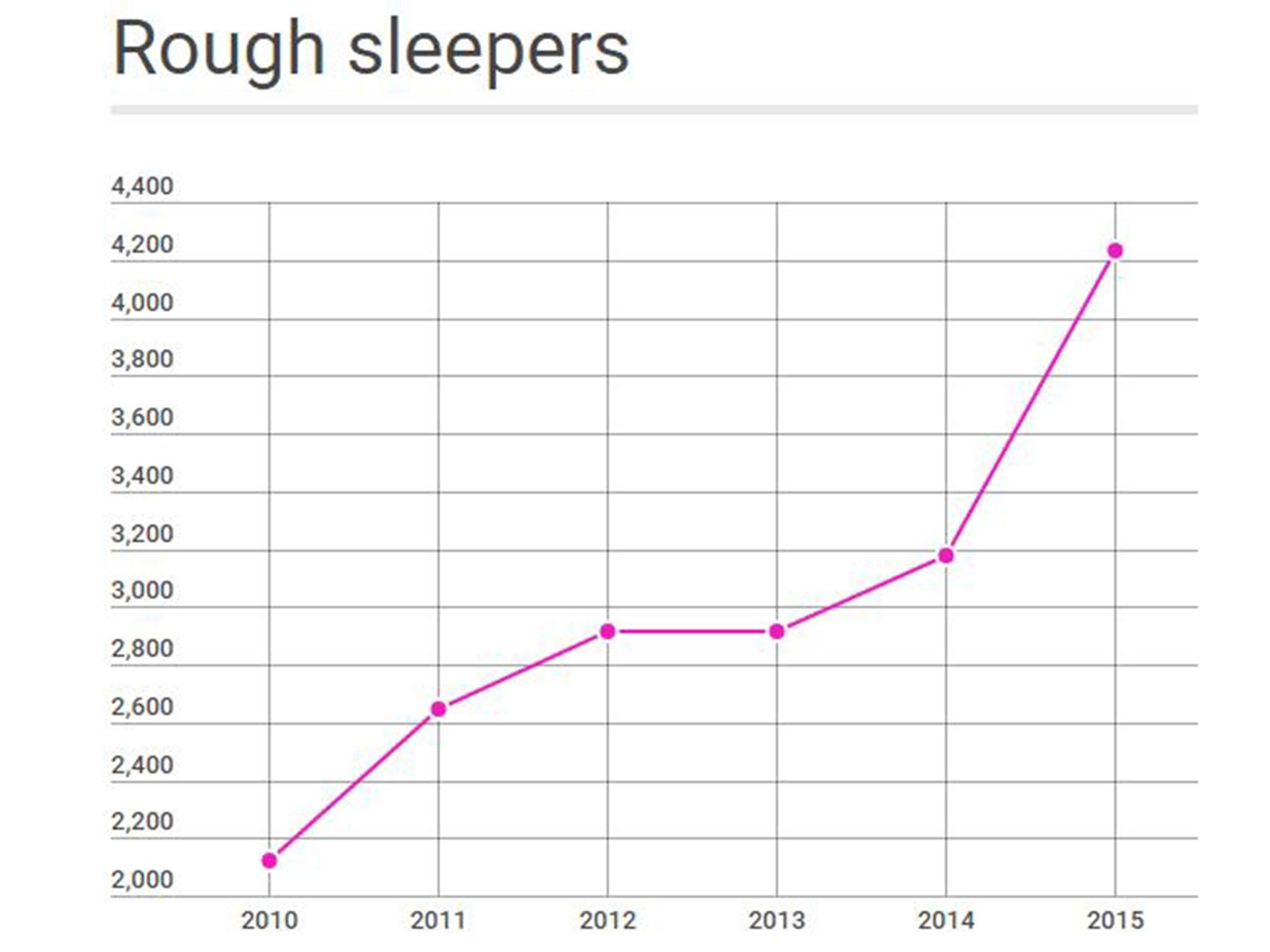5 charts which show how homelessness has soared under the Conservatives
Homelessness has soared since 2010

MPs have warned a “hidden homelessness” crisis is taking place throughout the UK as the number of people sleeping rough or living in temporary accommodation has soared since the Conservatives entered office in 2010.
In a report, the cross-party Communities and Local Government Select Committee warned: “The impact of the welfare reforms of recent years have increased pressure on levels of homelessness.”
They cite social housing shortages, spiralling rents, loss of Universal Credit and lack of sufficient support for children leaving care or offenders leaving prison, as among key reasons for the rise.
Earlier this week, a homelessness charity issued a warning about "sordid" adverts posted online offering homeless women free accommodation in exchange for sex. It is feared some people may be exploiting the housing crisis to take advantage of homeless women, who may feel they have no other options.
The report states: "We have found that homelessness is undoubtedly increasing… The most visible form of homelessness is rough sleeping, with people sleeping in and living on the street, in parks and in shop doorways.
"However, there is also a significant number of people who are homeless but are in temporary accommodation and night shelters, or rely on a series of short-term arrangements and the kindness of friends and family. Whilst less visible, it is essential that the ‘hidden homeless’ are taken into account in any discussion on how homelessness can be reduced.”
Data shows homelessness has increased dramatically since 2010. In England, the proportion of people sleeping rough amounts to 0.16 per 1,000 households. This is up from 0.08 in 2010.
Applications to local authorities for help with homelessness have also risen. In 2015, 27,803 applications were made. This is up from 21,317 in 2010.
The number of households living in temporary accommodation such as B&Bs or hostels has also spiked. 71,497 households were living in such housing arrangements per quarter last year. This is up from 51,314 in 2010.
Homeless people are also more likely to experience a mental health problem, with a 45 per cent prevalence rate, compared to 25 per cent among the general population.
The report also notes many homeless women can also be particulalry vulnerable to sexual exploitation, with 28 per cent of women saying they have "formed an unwanted sexual partnership to get a roof over their heads".
The report notes that the committee was warned statistics available may only indicate the tip of the iceberg, as the nature of homelessness means many records are imprecise.
Kate Webb from homelessness charity Shelter said: “Overall there is very poor recording of who is homeless. This is largely because a lot of people try to self-serve and will sofa-surf or stay with friends and family for as long as possible.
“Local authorities should be recording everyone who approaches them as homeless, but we know that often some people are sent out of the door first, so they can never make it onto the books.”
Subscribe to Independent Premium to bookmark this article
Want to bookmark your favourite articles and stories to read or reference later? Start your Independent Premium subscription today.

Join our commenting forum
Join thought-provoking conversations, follow other Independent readers and see their replies